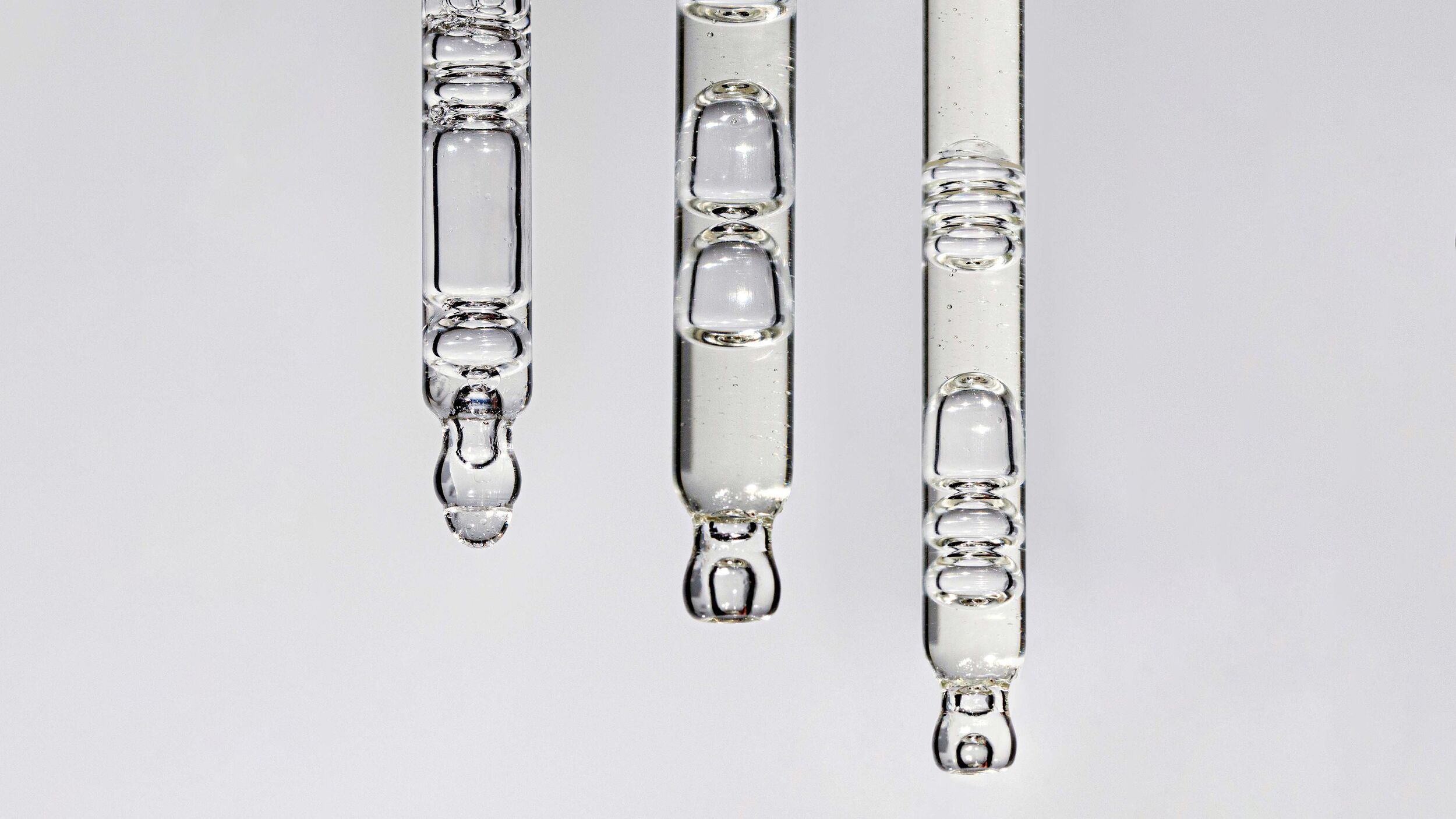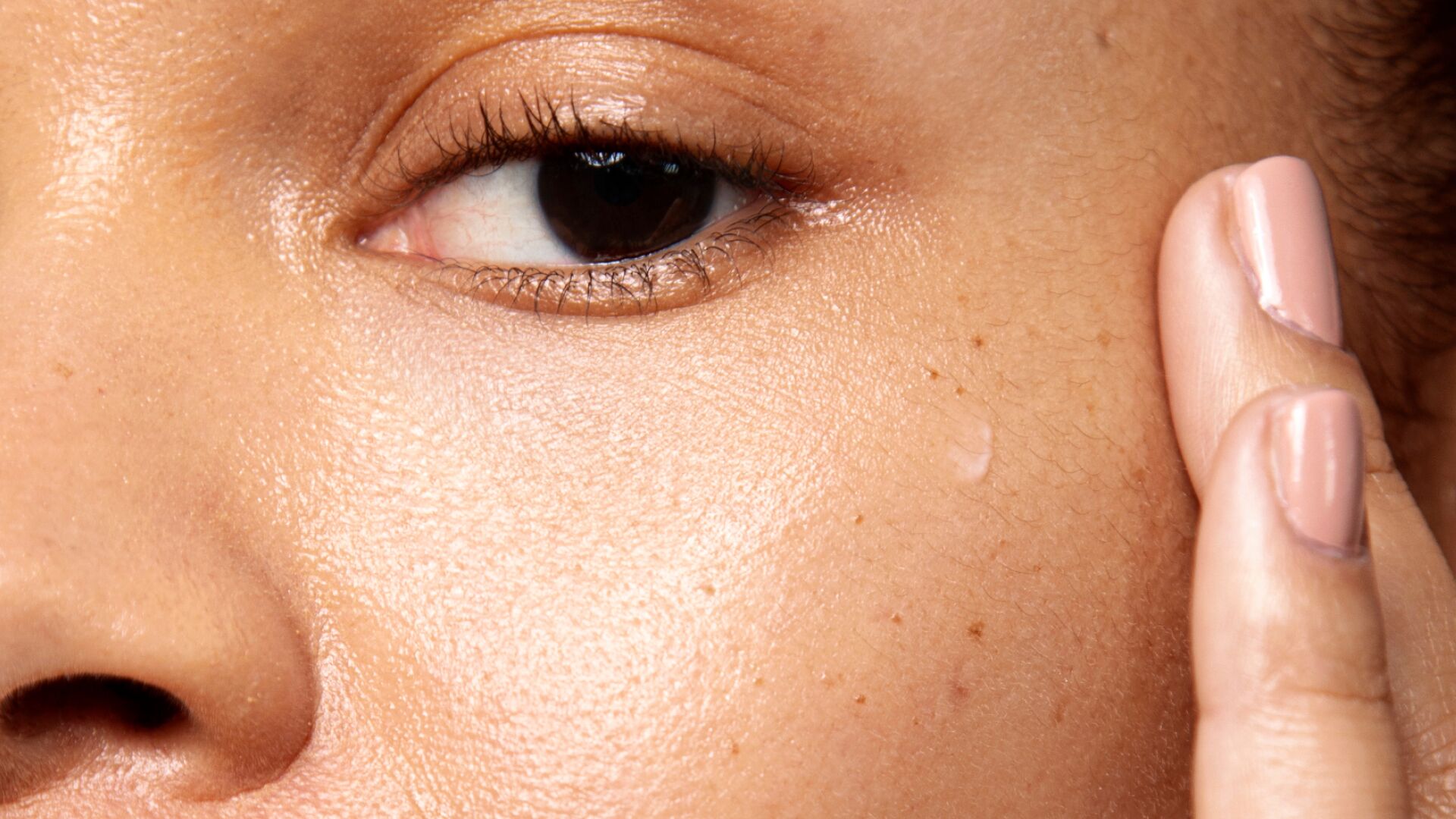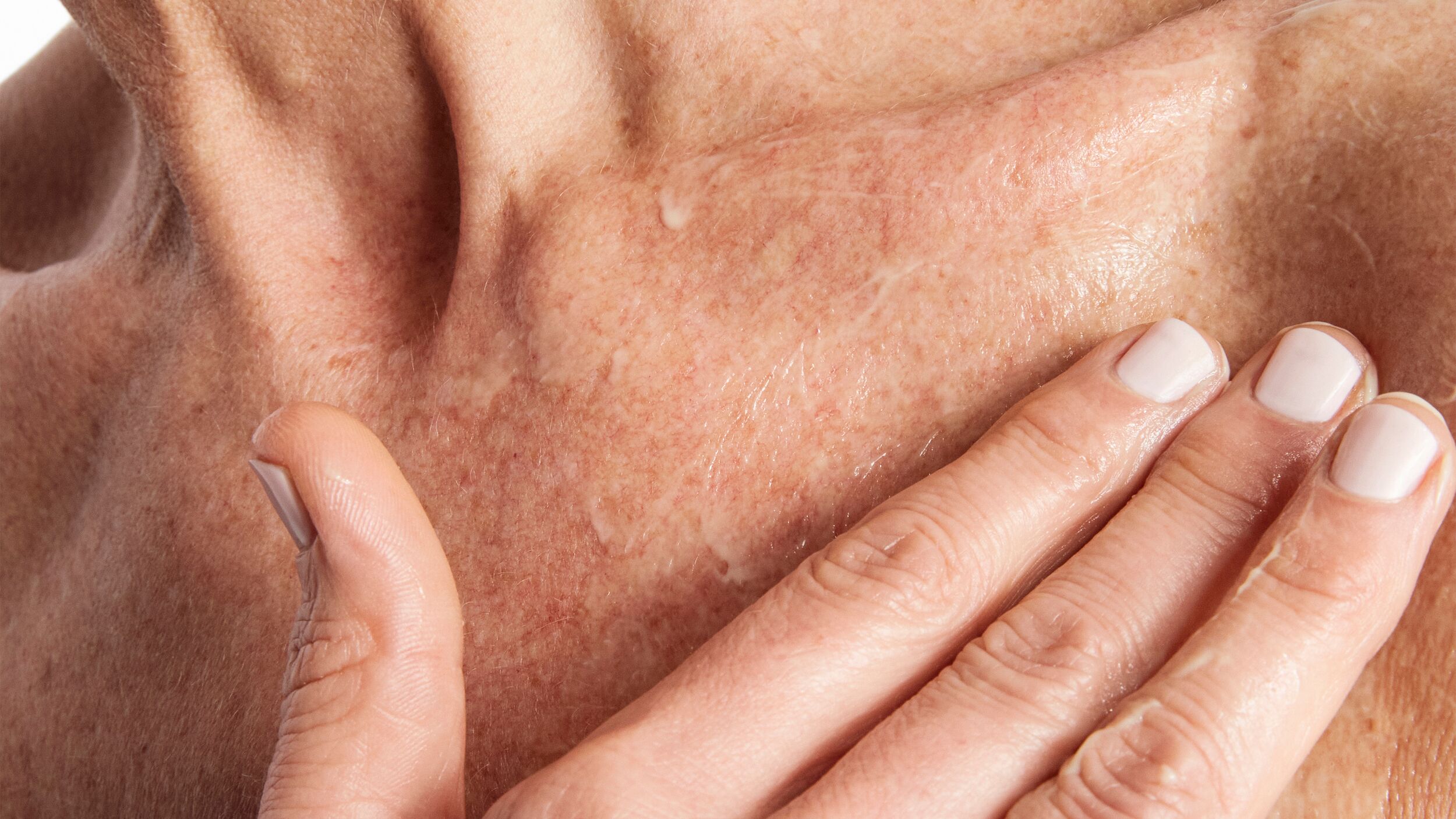
What is Salicylic acid?
Salicylic acid is a beta-hydroxy acid (also known as BHA). If you’re familiar with alpha-hydroxy acids (another type of exfoliating acid) you’ll know that there are different forms of AHA, including Glycolic, Lactic, and Malic acids. (Beta-hydroxy acids are slightly easier to navigate, as although there are different types, Salicylic acid tends to be the primary one used in skincare.)
It occurs naturally in the bark of willow trees and other plants, although the Salicylic acid found in your skincare is likely to have been created in a laboratory.
What does Salicylic do?
If your skin is oily or combination and prone to congestion or breakouts, you’re really going to reap the benefits of Salicylic acid. Before we get into how it works, let’s first remind ourselves of the key cause of spots like blackheads and whiteheads. They form when oil and old skin cells combine to create a blockage in our hair follicles. For clear skin, we want that natural oil (also known as sebum) to be flowing freely without obstruction.
Blackheads and whiteheads form when oil and old skin cells combine to create a blockage in our hair follicles
Salicylic acid is oil soluble, which allows it to dive deep into your pores. There, it sets to work dissolving the bonds that hold onto these no-longer-needed skin cells. This exfoliation process does happen naturally eventually but can slow to factors like age and stress. So, if blemishes are a bugbear of yours, this will help avoid these potential blockers from out-staying their welcome. Taking a two-pronged approach to preventing blemishes, Salicylic acid also helps to balance the flow of oil in the skin. Again, meaning less chance of a blockage.
If you have existing blemishes, Salicylic acid will help send those packing too. Regulating oil flow and whisking away dead skin cells plays a part, but it’s the additional ability to dial down redness and pacify inflammation that really makes the difference to how angry a spot looks and feels.
How to use Salicylic acid
As Salicylic acid is an ingredient, not a product, how you use it will depend on the form it’s in. These include…
Cleanser: Use once or twice a day depending on what your skin can tolerate. Salicylic acid can be irritating around the eyes so avoid this delicate area.
Toner/Liquid exfoliant: Swipe on with fingers or a cotton pad (depending on how watery the formula is) once or twice a day after cleansing.
Serum: Smooth onto clean skin. Be wary of layering with other potent actives like alpha-hydroxy acids and retinoids.
Moisturiser: Apply to clean skin. Again, be mindful of any actives you have already applied in your serum.
Mask: Use once or twice a week for a deeper action on spots and blemishes. Follow with a moisturiser to rehydrate the skin.
Spot Treatment: Dot onto clean skin as a targeted treatment and follow with moisturiser.
You could use, say, a Salicylic acid cleanser and toner together, but we wouldn’t recommend including it at every step of your routine. As a general rule, it’s always best to apply Salicylic acid after a shower to avoid accidentally washing any of it off with water or steam.

Your Salicylic acid questions answered
Can you use Salicylic acid every day?
Everyone’s skin is unique, and not everyone can tolerate active ingredients like Salicylic acid at the same percentage or frequency – a bit like not everyone can comfortably eat spicy food. The best approach is to introduce Salicylic acid toners and serums into your routine slowly (a couple of times a week to begin with) and build up your usage once you can see your skin is happy.
Cleansers with Salicylic acid are slightly different, as they’re not being left on the skin – rather rinsed away after a few seconds. Most people (bar those with super-sensitive skin) should be able to use a Salicylic acid cleanser every day. The other exception is face masks, which are designed to be an added extra when your skin needs a little extra TLC – not a daily part of your routine.
Is Salicylic acid good for spots?
For all the reasons we’ve already touched on (the ability to balance oil flow, remove old, pore-clogging skin cells and reduce inflammation) Salicylic acid is a great ingredient for the treatment of spots. If you’re struggling to contain blemishes and your skin is acting out, there’s a temptation to throw everything at it all at once. But, it’s simplicity (and consistency) that’s going to tip the scales towards clearer skin.
To support the work of Salicylic acid, bookend its application with a good cleanser and a water-based, non-comedogenic moisturiser
To support the work of Salicylic acid, bookend its application with a good cleanser and a water-based, non-comedogenic moisturiser. If you’ve been wearing makeup or SPF, it’s best to double cleanse your skin at night – once to whisk away surface-level grime, and second to really get into your pores. In the morning, cleansing once is enough.
Does Salicylic acid make acne worse before it gets better or cause skin purging?
As Salicylic acid is speeding up the rate at which your skin evicts old skin cells, it can sometimes initially cause more breakouts to come to the surface. This process is also known as purging. These blemishes were lurking there anyway, but have just made a more prompt appearance. It’s short-term pain for long-term gain though, as Salicylic acid will help reduce future breakouts.
Confusingly, an increase in spots after incorporating Salicylic acid into your routine could also be a sign that you’re using too much Salicylic acid or too many blemish-busting treatments in total. When it’s overwhelmed, dehydrated and irritated, your skin can start to act out – leading to more breakouts.
It’s also worth looking outside your skincare when experiencing blemishes. There are lots of other factors that impact our skin, including stress, weather, hormones, and diet, so those new spots appearing after you’ve started using Salicylic acid could just be a coincidence.
Does it help to remove spot scars?
Annoyingly, spots tend to leave their mark instead of disappearing without a trace. Spot scars can take a number of different forms, from dark marks (also called post-inflammatory hyperpigmentation) to pitted dips in the skin. As Salicylic exfoliates, it helps to bring newer, fresher skin to the surface to improve the texture and tone of your complexion. Unfortunately, that’s as far as it goes, and it’s not a real remedy for scars or marks.
As Salicylic exfoliates, it helps to bring newer, fresher skin to the surface to improve the texture and tone of your complexion
If you have scars that bother you, it’s best to seek the advice of a doctor or dermatologist who can advise on the best specialist treatment depending on the kind of blemish you have.
Can you use Salicylic acid with retinol?
Retinol works to speed up the rate at which our cells turnover, as well as encouraging the production of skin-plumping proteins like collagen and elastin. This makes it a great ingredient for anyone who’s battling blemishes but is also conscious about fine lines or a loss of elasticity. Retinol works well with Salicylic acid, firstly, as Salicylic acid will help to clear the way for retinol to penetrate, and secondly, as they’re both working to whisk away old, no longer needed skin cells.
This comes with a caveat though. Both Salicylic acid and retinol are efficacious active ingredients, so it’s smart to think twice before combining them. Start by using them on alternate days, or Salicylic acid in the morning and retinol in the evening, before working up to layering one after the other. You might find that using both on different days a couple of times a week is enough to see an improvement in your complexion.

Can you use Salicylic acid with Hyaluronic acid?
Hyaluronic acid is acid in name, but not so much in nature, so won’t exfoliate the skin like Salicylic acid will. Instead, it’s the skincare equivalent of a nice big glass of water. It’s a humectant, which means it draws in moisture from the atmosphere and holds it in the skin. As it’s not competing with Salicylic acid in terms of function and is suitable for even sensitive skin, you can certainly use Salicylic and hyaluronic acid together. In fact, we’d recommend that you do.
There’s a lot of confusion around the difference between dry and dehydrated skin which causes people with oily skin to steer clear of hydrating ingredients like hyaluronic acid. Dry is when skin is lacking in oil, and dehydrated is when skin is lacking in water, so skin can be both oily and dehydrated all at once. Topping up those much-needed water levels will help oily skin to function at its best, and stop it from overcompensating by making yet more oil. Salicylic acid will also help hyaluronic acid to penetrate the skin more effectively.
Can you use Niacinamide with Salicylic acid?
Niacinamide and Salicylic acid are a match made in skincare heaven and work wonders when used in tandem. Niacinamide is pretty amicable and plays nicely with other active ingredients. It’s a multi-tasker, which helps to calm skin, balance oil, and prevent breakouts – so it’s suited to exactly the same oily, congested skin that benefits from Salicylic acid.
Salicylic acid and Niacinamide can be used together or layered in separate products
Where Salicylic will help to remove old skin cells from the equation to reduce and ward off blemishes, niacinamide will bring down oil content and placate angry, red, and raised spots. They can be used together in the same product or layered one after the other (for example, a Salicylic acid toner followed by a niacinamide serum) depending on your preferred routine.
Can you use it with Vitamin C?
Vitamin C and Salicylic acid can be used together to lessen the occurrence and aftermath of breakouts. Vitamin C is a punchy antioxidant, shielding skin from free radicals from things like pollution and stress – both of which can contribute to breakouts. It’s also great at clearing up and brightening dark marks left behind by past blemishes. With continued use, skin tone improves for a fresher-looking complexion.
The best way to use them together is to use Salicylic acid first, leading and clearing the way for Vitamin C. Again, keep in mind that both are active ingredients, and you don’t want to throw the bathroom sink at skin that’s already in a pickle. It makes sense to use vitamin C in the daytime for that antioxidant protection, and Salicylic acid at night to bring down blemishes while you snooze.
Can you use it with Glycolic acid?
Salicylic acid is a beta-hydroxy acid (BHA) and glycolic acid is an alpha-hydroxy acid (AHA). They work in similar ways on the skin, except Salicylic acid is oil soluble, so works more on in-pore blockages, while glycolic acid is water soluble and works to buff away dead skin cells from the upper layers of the skin.
Glycolic acid will help to brighten and refine the skin, reducing the appearance of fine lines and hyperpigmentation. A defining feature of glycolic acid is its small molecule size, which allows it to penetrate easily into the skin. But this benefit is double-edged, as it can also cause irritation.
You can use glycolic and Salicylic acid within the same routine but do so sparingly to avoid overwhelming the skin. Either use on alternate days or combined in one once-or-twice-a-week treatment like a mask.
How long does it take for Salicylic acid to work?
It might not be obvious to the naked eye, but our skin is constantly busy regenerating behind the scenes. Like a conveyor belt, the top layers of skin go through cycles where they shed the oldest cells to make space for the fresh, new ones to reach the top. How long this process takes varies from around 21 days in your 20s to 45 days in your 50s, with an average skin cycle length of 28 days.
It’s only really once your skincare has been through a couple of cycles that you’ll be able to see if Salicylic acid is really working for your skin. We know that sounds like a long time to wait, but patience is a real virtue when it comes to skincare. That’s also not to say that you won’t see results before then, and you should see blemishes start to fade faster.
Shop the Edit
Shopping at members price automatically adds a free 60-Day Free Trial to your basket. This autorenews onto an annual £59 Beauty Pie membership. Cancel any time in your account.
Prefer to shop at non-members' prices? - Simply click into the product page.Terms apply


